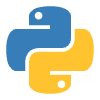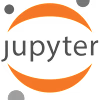Communication Deep Dive: Does This Freelancer Data Scientist Get Your Business?

Communication Deep Dive: Does This Freelancer Data Scientist Get Your Business?
Why Communication Is Vital for Data Science
5 Steps to Evaluate a Freelancer’s Communication
1. Clarify the Project Scope
2. Assess Business Context Understanding
3. Examine Their Interaction Style
4. Check Reporting and Update Frequency
5. Review Past Delivery and Feedback
Tools for Transparent Collaboration
1. Real-Time Chat and Video Calls
2. Shared Analytical Platforms
Pitfalls That Can Undermine Your Outcomes
1. Excessive Technical Jargon
2. Inconsistent Feedback Cycles
3. Unclear Accountability
4. Scope Creep
Freelance Data Science for Better Business Impact
1. Tailored Solutions for Unique Challenges
2. Focus on Business Metrics and ROI
FAQs about Communication Deep Dive
How do I handle different communication styles within my team?
Can a freelance data scientist offer ongoing support after project delivery?
What if the freelancer’s timezone is different from mine?
How do I make sure the freelancer truly understands my business goals?
Key Takeaways for Sustainable Growth
Communication Deep Dive: Does This Freelancer Data Scientist Get Your Business?
Why Communication Is Vital for Data Science
“Most data projects fail not because the model was wrong, but because the question was.”
5 Steps to Evaluate a Freelancer’s Communication
1. Clarify the Project Scope
“If the scope is fuzzy, so is the finish line.”
2. Assess Business Context Understanding
3. Examine Their Interaction Style
4. Check Reporting and Update Frequency
5. Review Past Delivery and Feedback
Tools for Transparent Collaboration
1. Real-Time Chat and Video Calls
“Sometimes a 3-minute screen recording saves 30 minutes of typing—and 3 days of confusion.”
2. Shared Analytical Platforms
clientname_kpi_roadmap_v1_apr2025.docx) helps reduce versioning issues.Pitfalls That Can Undermine Your Outcomes
1. Excessive Technical Jargon
“If the update sounds smart but no one knows what to do with it, it’s not helpful—it’s a TED Talk.”
2. Inconsistent Feedback Cycles
3. Unclear Accountability
4. Scope Creep
“The project started as a dashboard. Now it’s a dashboard + API + forecasting model + internal training session. No one remembers how we got here.”
Freelance Data Science for Better Business Impact
1. Tailored Solutions for Unique Challenges
“Some of the best deliverables I’ve produced weren’t part of the original scope—they were answers to better questions we discovered along the way.”
2. Focus on Business Metrics and ROI
FAQs about Communication Deep Dive
How do I handle different communication styles within my team?
“One team member wants bullet points, another wants a Loom video. Both are fine—as long as the message doesn’t change.”
Can a freelance data scientist offer ongoing support after project delivery?
What if the freelancer’s timezone is different from mine?
How do I make sure the freelancer truly understands my business goals?
Key Takeaways for Sustainable Growth
Posted Apr 20, 2025
Communication Deep Dive: Does this freelancer data scientist align with your business goals? Learn how communication impacts project success.










